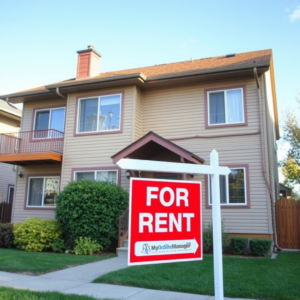Renting a home in a major U.S. city is no small feat—especially when you’re paying a premium for every square foot. As housing prices continue to rise and urban populations swell, renters are feeling the pressure more than ever. A recent report by Storage Sense, highlighted in Quartz, ranked U.S. cities based on average rent per square foot, revealing just how costly it is to live in the country’s most in-demand metropolitan areas.
Let’s dive into the top seven cities where space comes at the steepest price.
1. Washington, D.C. – $229.29 per 100 sq ft
The nation’s capital tops the list as the most expensive city in America for rent per square foot. With a blend of historic neighborhoods, international institutions, and a constant influx of professionals and government employees, it’s no wonder demand is sky-high. Even though D.C. might not always get the same buzz as New York or San Francisco, it outpaces them when it comes to compact, pricey living.
Why so expensive?
-
High concentration of federal jobs
-
Limited land for new development
-
Rising demand for high-end urban living
2. San Francisco, CA – $225 per 100 sq ft
Long known as one of the most expensive housing markets in the U.S., San Francisco continues to push renters to the edge. The city’s stunning views, booming tech industry, and proximity to Silicon Valley make it a hotbed for professionals. But with strict zoning laws and a chronic housing shortage, space is at a premium.
Notable factors:
-
Tech industry dominance
-
Limited buildable land
-
High-income residents competing for limited rentals
3. New York City, NY – $190 per 100 sq ft
It’s no surprise that the city that never sleeps also rarely offers affordable rent. With boroughs like Manhattan and Brooklyn commanding astronomical rates, NYC remains a powerhouse in high-cost living. Still, its job opportunities, cultural diversity, and entertainment options make it a magnet for renters from around the globe.
Interesting point:
-
NYC is home to both some of the most expensive and most affordable units, depending on the borough.
4. Boston, MA – $176 per 100 sq ft
Boston is more than just a college town—although its dozens of prestigious institutions do contribute heavily to demand. As a hub for healthcare, education, and biotech, the city has seen steady rent increases. Many historic buildings also limit the ability to add new residential space, driving prices even higher.
Driving costs:
-
High demand from students and professionals
-
Historic preservation restrictions
-
Limited housing supply in central areas
5. San Jose, CA – $152 per 100 sq ft
Nestled in the heart of Silicon Valley, San Jose is booming with tech professionals who earn high wages—and often pay equally high rent. The city has become emblematic of California’s housing affordability crisis, where even modest apartments come with steep monthly costs.
Contributors to rent inflation:
-
High-paying tech jobs
-
Limited affordable housing initiatives
-
Spillover demand from neighboring cities like SF and Palo Alto
6. San Diego, CA – $132 per 100 sq ft
San Diego offers beachside living, beautiful weather, and a strong military presence. Combine that with a fast-growing tech and biotech sector, and the competition for rentals is fierce. While still more affordable than San Francisco or L.A., San Diego’s cost per square foot puts it solidly in the top 10.
Appealing features:
-
Desirable coastal lifestyle
-
Military and research institutions
-
Suburban sprawl driving up urban demand
7. Seattle, WA – $128.42 per 100 sq ft
Seattle rounds out the list, fueled by Amazon, Microsoft, and a booming startup scene. The Emerald City also benefits from natural beauty, arts, and culture, which continues to attract young professionals. However, rapid population growth and slow housing development have strained supply and driven prices up.
Seattle’s rent rise factors:
-
Tech industry expansion
-
Influx of transplants from California
-
Infrastructure struggles to keep up with demand
What This Means for Renters
These numbers don’t just reflect market conditions—they reflect real-life trade-offs for individuals and families. For many, it means renting smaller spaces, moving further from the city core, or even relocating entirely. For others, it sparks conversations around affordable housing policy, urban planning, and how cities can sustainably accommodate growth.
Whether you’re an aspiring urban dweller, a real estate professional, or someone trying to understand America’s housing landscape, this list is a reminder: in many cities, every square foot truly matters.
Source: Quartz: The 7 Cities with the Highest Rent per Square Foot in the U.S.

